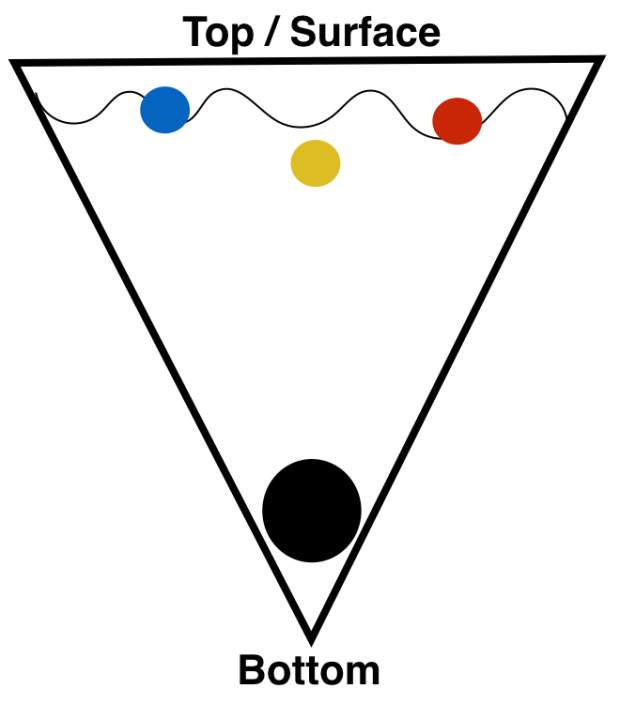In this blog post I will introduce you to the concentration cone. It’s something that I’ve had as a mental model during the most part of my career. The text uses a project, the project manager role and a team to explain the concentration cone, but this is applicable in many other contexts as well.
Introduction
If you are a project manager and responsible for a project, you need to handle many tasks in parallel. At the same time, you need to be able to juggle around more than one ball in the air if you like. Can’t you handle more than one task at the time? Well, there are other roles that may suit your personality better.
I like the juggling metaphor. At a company conference I attended, all employees got three juggling balls and an hour of practice. Most people were able to get all the balls in the air and catch (some) of them. With a little more practice anyone can learn to juggle three balls. To juggle for a while is also a good way to take a break, it requires total focus and ”clears your brain”.
In juggling, you can’t hold on to a single ball for too long, you need to toss it up in the air to be able to catch the ball that is falling down. There is a ”rhythm” or ”flow” you need to be able to master, the same thing you need to be a good project manager. I believe this to be very important! Below you see my mental model to explain it more deeply.
Concentration cone

At the top of the concentration cone you are handling many tasks at the same time (colourful circles in the picture above). You need to have a constant flow of things happening, you can’t spend too much time diving into details for each task. You need to have the correct amount of information about the task, so you can make a proper decision and act. Wether it be doing the task yourself or pass it along to another person. Picture yourself swimming at the top of the concentration cone, dip your head into the water for each task to find out what to do about them, but then get your head up above the water surface again to catch the newt task. As a project manager, its at the surface you need to be, and let others ”dive deep”.
On the bottom of the concentration cone, you are in deep concentration and are working focused on only one thing (black circle in the picture above). Here you need to be, to be able to solve complex problems and do deep thinking. When you are here you shouldn’t be disturbed, then you will be forced up to the surface. Maybe if possible, its best if you can focus totally. But since you need to be available to your team to be ”in control” you can’t be deep down in the concentration cone too long. Your team members needs to be deep down in the concentration cone a lot, if your project shall be successful!
It’s very hard to find balance if you are trying to go ”up and down” in the concentration cone. My recommendation is obvious, stay at the surface to be a good project manager. I once experienced a fellow project manager that struggled to get the grip of a project. To get things going, he dove down into the details of every single task trying to do them himself. By doing this, the overall ”helicopter view” of the project was lost, and the customer was deeply unhappy about ”nothing happening”. It can surely itch in your fingers to dig into the details yourself (for example being an old programmer like me, that wants to ”hack code” again), but don’t do it. When you are deep down in the concentration cone, you can get stuck, and it’s a long way back to the surface. Your project will not benefit from you losing the overall control.
Summary
Did you like the mental model of the concentration cone? If you are more into soccer, you can say that a project manager should be like a midfielder and not like a goal keeper. The midfielder has to be involved in the game all the time, whether it being offence or defence. The goal keeper on the other hand, just have to focus on one thing only, stop the opponents from making goals. Until next time, enjoy!
All the best,
Tomas from TheAgileist